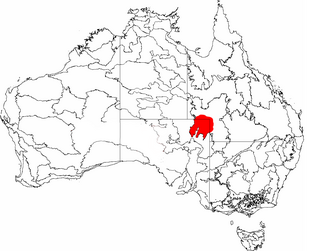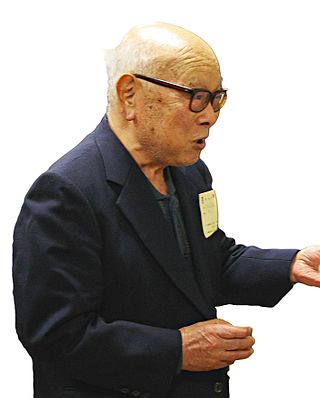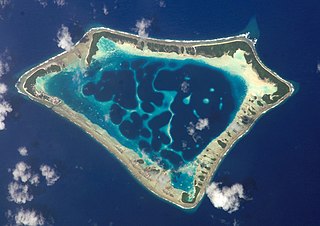
Integrated geography is where the branches of human geography and physical geography overlap to describes and explain the spatial aspects of interactions between human individuals or societies and their natural environment, these interactions being called coupled human–environment system.

Geomorphology is the scientific study of the origin and evolution of topographic and bathymetric features created by physical, chemical or biological processes operating at or near Earth's surface. Geomorphologists seek to understand why landscapes look the way they do, to understand landform and terrain history and dynamics and to predict changes through a combination of field observations, physical experiments and numerical modeling. Geomorphologists work within disciplines such as physical geography, geology, geodesy, engineering geology, archaeology, climatology, and geotechnical engineering. This broad base of interests contributes to many research styles and interests within the field.
Nick Middleton is a British physical geographer and supernumerary fellow of St Anne's College, Oxford. He specialises in desertification.
David S. G. Thomas is a British scientist and geographer. He was born at his parents' home in River, near Dover, Kent, UK, in October 1958. He is Professor of geography at the University of Oxford, the fifth person to hold the Statuary Chair, and a Professorial Fellow of Hertford College, Oxford.

Sturt Stony Desert is an area in the north-east of South Australia, far south western border area of Queensland and the far west of New South Wales.
Sir Ronald Urwick Cooke, FRGS DL is a professor of geography and geomorphology who was vice-Chancellor of the University of York from 1993 to 2002.
David Leslie Linton was a British geographer and geomorphologist, was professor of geography at Sheffield and Birmingham, best remembered for his work on the landscape development of south-east England with S. W. Wooldridge, and on the development of tors.

Marjorie Mary Sweeting, was a British geomorphologist specializing in karst phenomena. Sweeting had gained extensive knowledge on various topographies and landscapes, by travelling around the world to places such as Greece, Australia, Czechoslovakia, United States, Canada, South Africa, Belize, and most notably China. She published Karst Landforms, and Karst in China: its Geomorphology and Environment after many years of work there starting in 1977. The latter is the first comprehensive Western account of China's karst, one of the first western published works on the karst found within China, even in a male dominated field.

The British Society for Geomorphology (BSG), incorporating the British Geomorphological Research Group (BGRG), is the professional organisation for British geomorphologists and provides a community and services for those involved in teaching or research in geomorphology, both in the UK and overseas. The society’s journal, Earth Surface Processes and Landforms is published by Wiley-Blackwell and online access is available free to members. The society is affiliated with the Royal Geographical Society as an affiliated research group and with the Geological Society of London as a specialist group.

A bornhardt is a dome-shaped, steep-sided, bald rock outcropping at least 30 metres (100 ft) in height and several hundred metres in width. They are named after Wilhelm Bornhardt (1864–1946), a German geologist and explorer of German East Africa, who first described the feature.
Andrew Warren is a British physical geographer. He is Emeritus Professor of Geography at University College London, UK.
David Ross Stoddart, was a British physical geographer known for the study of coral reefs and atolls. He was also known for key works on the history and philosophy of geography as an academic discipline. He was a lecturer at the University of Cambridge, and then professor and later emeritus professor at the University of California, Berkeley.

Periglaciation describes geomorphic processes that result from seasonal thawing and freezing, very often in areas of permafrost. The meltwater may refreeze in ice wedges and other structures. "Periglacial" originally suggested an environment located on the margin of past glaciers. However, freeze and thaw cycles influence landscapes also outside areas of past glaciation. Therefore, periglacial environments are anywhere when freezing and thawing modify the landscape in a significant manner.
Paul A. Shaw is a physical geographer and a Fellow of the Royal Geographical Society.
Biuletyn Peryglacjalny was a scientific journal covering research on periglacial geomorphology. It was established in 1954 in Łódź by Polish geomorphologist Jan Dylik, who was its editor-in-chief until 1972. The journal ceased publication after 39 issues in 2000, after having played an important role in the development of periglacial geomorphology.

Eiju Yatsu was a Japanese geomorphologist who taught in Japan, US and Canada. He is best known for his contributions to weathering and 'rock control' in geomorphology.

Climatic geomorphology is the study of the role of climate in shaping landforms and the earth-surface processes. An approach used in climatic geomorphology is to study relict landforms to infer ancient climates. Being often concerned about past climates climatic geomorphology considered sometimes to be an aspect of historical geology. Since landscape features in one region might have evolved under climates different from those of the present, studying climatically disparate regions might help understand present-day landscapes. For example, Julius Büdel studied both cold-climate processes in Svalbard and weathering processes in tropical India to understand the origin of the relief of Central Europe, which he argued was a palimpsest of landforms formed at different times and under different climates.
Rita Ann Moden Gardner, is a British geographer and academic, specialising in geomorphology. Since January 2019, she has been Chief Executive of the Academy of Social Sciences. She taught at St Catherine's College, Oxford (1978–1979), King's College, London (1979–1994), and finally at Queen Mary and Westfield College (1994–1996) where she was Reader in Environmental Science. From 1996 to 2018, she was Director of the Royal Geographical Society: she was the learned society's first female director.

Tropical deserts are located in regions between 15 and 30 degrees latitude. Environment is very extreme. They have the highest average monthly temperature on Earth. Rainfall is sporadic; precipitation may not be observed at all in a few years. In addition to these extreme environmental and climate conditions, most tropical deserts are covered with sand and rocks, and thus too flat and lacking in vegetation to block out the wind. Wind may erode and transport sand, rocks and other materials; these are known as eolian processes. Landforms caused by wind erosion vary greatly in characteristics and size. Representative landforms include depressions and pans, Yardangs, inverted topography and ventifacts. No significant populations can survive in tropical deserts due to extreme aridity, heat and the paucity of vegetation; only specific flora and fauna with special behavioral and physical mechanisms are supported. Although tropical deserts are considered to be harsh and barren, they are in fact important sources of natural resources and play a significant role in economic development. Besides the equatorial rainforest, there are many hot deserts situated in the tropical zone.
Heather Viles is a Professor of Biogeomorphology and Heritage Conservation in the School of Geography and the Environment at Oxford University, Senior Fellow at Worcester College, and Honorary Professor at the Institute of Sustainable Heritage, University College London. She is a Fellow of the British Society for Geomorphology.










